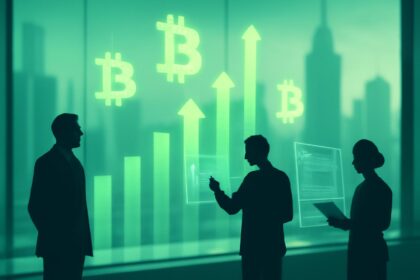Government Shutdown: Potential Shift from Historical Norms
For decades, U.S. government shutdowns have been largely political events with minimal lasting economic consequences. Market reactions, when they occur, tend to be short-lived, and the overall impact on gross domestic product (GDP) has been negligible, typically around 0.1 percentage points per week of closure. However, the current threat posed by President Donald Trump to permanently cut federal employees furloughed during the shutdown marks a potential departure from this historical pattern. This unprecedented move could exacerbate an already fragile labor market and introduce new economic uncertainties.
“We have reason to think that a shutdown this time may not follow past precedent,” said Michael McLean, senior public policy analyst at Barclays. “If Trump follows through, this would be a significant departure from past practice and could inject new uncertainty into the economic effect of a shutdown, which otherwise we would expect to be marginal.”
Fragile Labor Market Heightens Risks
The labor market is already exhibiting signs of stress, especially in the Washington, D.C. metropolitan area, home to many federal employees. Earlier this year, layoffs driven by efficiency initiatives have weakened job security in the region. Typically, furloughed federal workers are recalled after shutdowns end, mitigating long-term employment effects. But President Trump’s recent declaration on NBC News, stating that many furloughed employees “are going to be cut on a permanent basis,” signals a potential shift with more severe labor market consequences. Nomura economist David Seif notes that these permanent cuts could weigh more heavily on the upcoming October nonfarm payrolls report, expected in November, representing a more pronounced near-term impact than previous shutdowns.
Delays in Key Economic Data Releases
The Labor Department announced a near-total cessation of its activities during the shutdown, including the Bureau of Labor Statistics (BLS), responsible for critical economic reports such as the monthly jobs data. This shutdown will delay these releases, potentially diminishing data quality. Such delays could extend to inflation metrics like the Consumer Price Index (CPI), which directly influence cost-of-living adjustments for Social Security recipients. The 2013 shutdown offers a precedent, where the September jobs report and CPI release were postponed by weeks. The Federal Reserve, which relies heavily on BLS data to guide interest rate and monetary policy decisions, will face challenges in the absence of timely government statistics, potentially relying more on private sector data sources.
Mark Cabana, head of rates strategy at Bank of America, commented, “A shutdown would pause economic data releases, leaving the Fed reliant on private data for its policy decisions if the shutdown extends.”
Beyond macroeconomic indicators, the shutdown’s most direct impact will be felt by furloughed federal employees and contractors. The sudden loss of income, even if temporary, can significantly disrupt household financial stability. Elizabeth Renter, senior economist at NerdWallet, emphasizes the human element, stating, “When households are forced to go without income, even for a week, it can set back their financial stability significantly.”
FinOracleAI — Market View
The potential government shutdown in 2025 represents a critical inflection point where the usual economic resilience to such events may be tested. Unlike prior shutdowns, the threat of permanent federal job cuts and delayed economic data releases introduces new layers of uncertainty.
- Opportunities: Markets may find buying opportunities as initial sell-offs could be temporary; private data sources may gain prominence in guiding policy decisions.
- Risks: Prolonged labor market disruptions, delayed economic indicators complicating Federal Reserve actions, and reduced consumer confidence from income instability.
Impact: The economic consequences of this shutdown are likely to be more pronounced than past events, with significant risks to employment and economic data reliability, warranting close monitoring by investors and policymakers alike.













